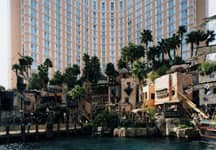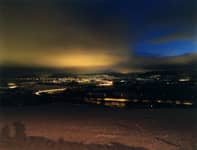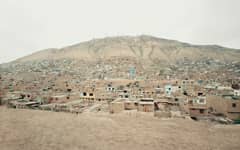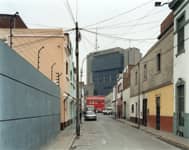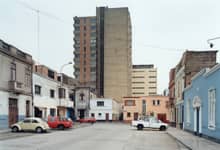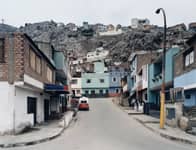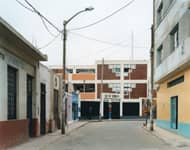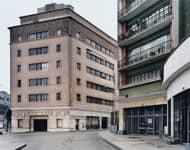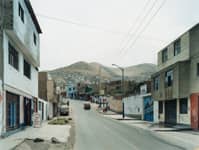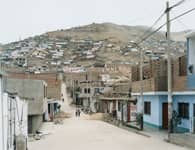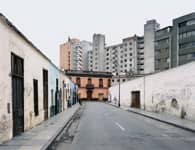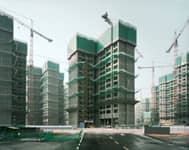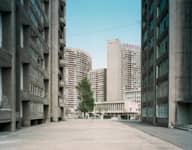For example, Struth first visited Peru in 2003 at the invitation of Alfons Hug, the curator of the 26th São Paulo Biennial 2004, who suggested that Struth photograph the famous Nazca lines in the Peruvian desert. Drawn instead to other possibilities in Peru, amongst them a number of landscape vistas and a huge expanse of flowering Bougainvillea which became Paradise 26, Struth struck up a friendship with Walter Schorlies, director of the Goethe Institut in Lima. Soon after his arrival in the Peruvian capital, Struth resolved to make new street photographs in response to the unfamiliar urban environment.
Struth recalls wanting to “work with distance, to keep an open and innocent gaze, to work without any personal narrative or experience of the city.” He was struck by the anonymity of the architecture, the complete lack of any visible historical continuity and identity in a conurbation shaped by the rupture of colonialism and its consequences.
With the exception of the larger-scale panorama of the urban structures of Cerro Morro Solar (2003), the prints of the street photographs from Lima are comparatively small. The photographs were first exhibited at the Museo de Arte de Lima in 2005. On his return visit to Peru for the exhibition, Struth was introduced by Schorlies to the Ayvar family, who resided in Cerro Morro, and he made two portraits of them. He then travelled to the Peruvian rainforest at Rio Madre de Dios near the border with Bolivia and made several photographs there.
In addition to the photographs made in dense urban environments in China in 1995, and then Lima in 2003, Struth has also made a number of single photographs of specific places in different cities over the past decade. His ambition remains to find an “emblematic photograph of a city: a work which has more general qualities, and which can offer a more epic narrative within a single picture.” He has exhibited single photographs made in Las Vegas, Nevada in 1999; Shanghai in 1999; New York in 2000; Dallas in 2001; São Paulo in 2002; Moscow in 2005; Seoul in 2007, and Hong Kong in 2008.
Several of these works also differ from the earlier street photographs made in Europe in that they feature recent or new urban developments, or places still under construction. On his first visit to Seoul in 2007, Struth photographed several of the new apartment blocks which had sprung up throughout Korea since its urbanisation in the 1970s. These echo in some ways his early project to describe the large-scale project at Beaugrenelle in Paris in 1979–80 or works like Le Lignon, Geneva (1989).
The proliferation of development in Korea and China offered Struth an opportunity to reflect on “how the rapidly growing economies of the 21st century invariably construct new housing on a vast and inhuman scale. Such development typifies the alarming dominance of power over space and shows our capacity to erase or ignore history in a headlong desire to build the future.”

